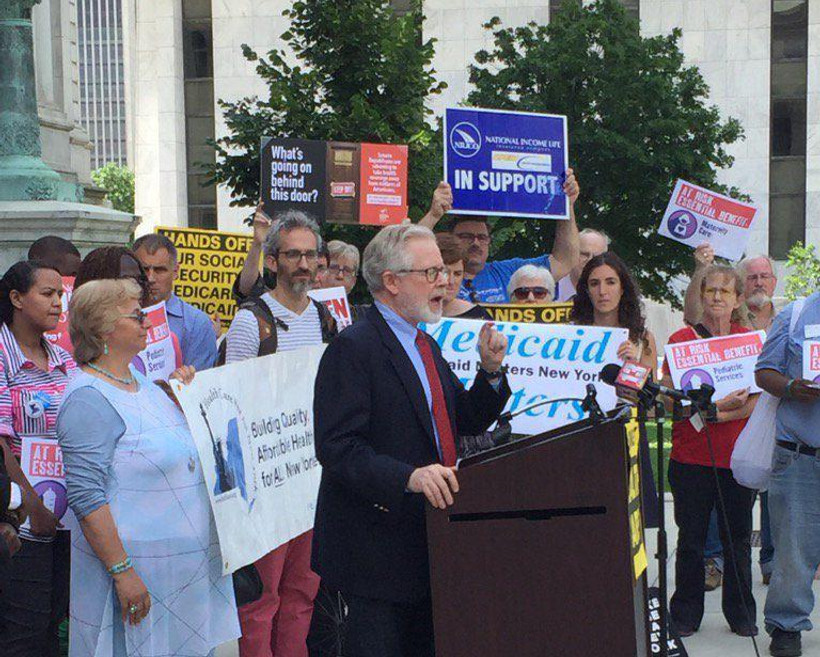Legislature Seeks to End “Arbitrary Limit” on Medicaid Spending
A 2011 rule prevents New York from adequately funding Medicaid, advocates say. This year’s budget could see it repealed.

A 2011 rule prevents New York from adequately funding Medicaid, advocates say. This year’s budget could see it repealed.

At New York Focus, our central mission is to help readers better understand how New York really works. If you think this article succeeded, please consider supporting our mission and making more stories like this one possible.
New York is an incongruous state. We’re home to fabulous wealth — if the state were a country, it would have the tenth largest economy in the world — but also the highest rate of wealth inequality. We’re among the most diverse – but also the most segregated. We passed the nation’s most ambitious climate law — but haven’t been meeting its deadlines and continue to subsidize industries hastening the climate crisis.
As New York’s only statewide nonprofit news publication, our journalism exists to help you make sense of these contradictions. Our work scrutinizes how power works in the state, unpacks who’s really calling the shots, and reveals how obscure decisions shape ordinary New Yorkers’ lives.
In the last two decades, the number of local news outlets in New York have been nearly slashed in half, allowing elected officials and powerful individuals to increasingly operate in the dark — with the average New Yorker none the wiser.
We’re on a mission to change that. Our work has already shown what can happen when those with power know that someone is watching, with stories that have prompted policy changes and spurred legislation. We have ambitious plans for the rest of the year and beyond, including tackling new beats and more hard-hitting stories — but we need your help to make them a reality.
If you’re able, please consider supporting our journalism with a one-time gift or a monthly gift. We can't do this work without you.
Thank you,


Nantwi’s cellmate, the only incarcerated witness in the room as guards allegedly killed the 22-year-old, speaks out for the first time.
The campaign has created 64 public fundraising web pages for people to raise money on its behalf. But it didn’t disclose any intermediaries.
Governor Kathy Hochul’s proposal to make canceling subscriptions easier would exempt many major companies. The Senate wants to eliminate that loophole.
The company used to help employers avoid paying for workers’ benefits. Now it’s slated to administer health insurance for tens of thousands of low-wage New Yorkers.
A legally mandated program to reimburse organ donors has languished since 2022. The health department now says it’ll fix that this year.
The health commissioner has asked the state’s Attorney General and lobbyist watchdog to launch a ‘formal inquiry.’
Roughly 60,000 children will lose vouchers over the next year without more funding.
Thousands of New Yorkers have had their food benefits stolen. Meanwhile, Congress will likely move forward with major cuts to the lifeline program.
In rural New York, even some Republicans are frustrated as the administration halts $186 million in conservation payments to farmers.